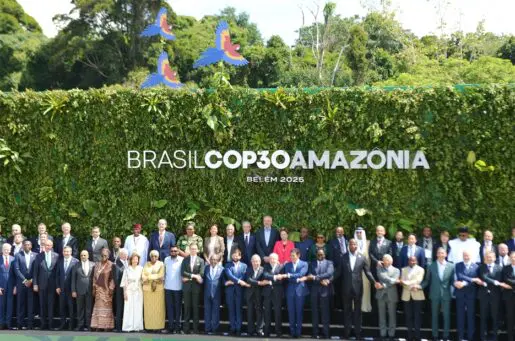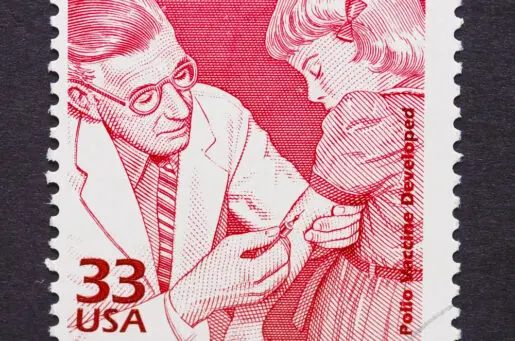Bioethics Forum Essay
The Existential Possibilities for Genome Modification of Species
In April, news broke that scientists affiliated with Colossal, a biotech startup, had used genome editing and reproductive technology to achieve the “de-extinction” of the dire wolf. A species that last stalked the North American continent about 10,000 years ago had ostensibly been ushered back into existence. The story is a great example of how genome modification raises questions about the existence of species. Meanwhile, a new essay in Science looks at the flip side of these questions, as it were: a team of authors led by scholars at The Hastings Center for Bioethics and Arizona State University asks whether genome editing technologies might acceptably be used to usher a species out of existence.
The authors, including the four of us, argue that they may—provided that there are very strong moral arguments in favor of eradication, participatory decision-making processes with local communities, and a careful analysis of the environmental effects. New World screwworm, a fly that parasitizes warm-blooded animals, and Anopheles gambiae, a complex of mosquito species that transmit malaria, seem to be on the face of it creditable candidates for deliberate extinction.
But how much should these existential possibilities really change policy for species protections? This question comes at a challenging time for conservation biology because the Endangered Species Act, the U.S. federal legislation that provides guidance for protection of species and has for decades been a vital component of U.S. conservation policy, has come under foundational criticism in the early days of the second Trump administration. In April, the administration proposed redefining “harm” in the ESA to exclude habitat destruction. Only intentional destruction of the species itself, such as through hunting, would count as “harm.” And in January, two executive orders signed by President Trump called for regular meetings of the Endangered Species Committee, a panel of federal and state officials who, under the ESA, can meet to vote on exemptions from the ESA’s requirements. The committee is sometimes called “the God Squad” because its rulings can decide the fate of species.
Existential questions posed by genome editing can go in unexpected directions. For example, the Trump administration welcomed news of the dire wolf’s claimed resurrection because it seems to suggest that any species loss is not very troubling, a point seemingly made by Interior Secretary Doug Burgum when he told employees at the Interior Department: “Now we have an opportunity to bring them back. Pick your favorite species and call up Colossal.” And the Science essay on deliberate extinction—a scholarly argument that species loss might sometimes be justified—could seem to support the administration’s interest in invoking the ESA’s God Squad provision more frequently.
In practice, “de-extinction” is not the answer to the ongoing extinction crisis, and recognizing that values trade-offs may very rarely, but at least possibly, justify eradication of a species does not mean that we should readily accept species loss.
To begin with, “de-extinction” is nowhere near as simple as calling up Colossal. It remains very hard to produce even a few individuals, and those individuals would still not constitute a self-reproducing population that is likely to do well in the wild, if only because of their lack of genetic diversity, and might have only a passing resemblance to the extinct species. In fact, given that what’s produced is at best a functional proxy of a lost species, it’s debatable whether “de-extinction” is the right word. A “de-extincted” wooly mammoth would be an Asian elephant that has been genetically modified to exhibit the traits that wooly mammoths once needed to survive in harsh tundra conditions. The real benefits of de-extinction may have more to do with what we learn about genome modification and the traits of extinct species than with the creation of the proxy.
Nor does the argument about deliberate eradication of a species provide much cover for an aggressive God Squad. That argument, which comes out of a Hastings and ASU collaboration that was funded by the National Science Foundation and included participation by environmental ethicists, bioethicists, conservation biologists, ecologists, social scientists, and scientists, is sharply curtailed: we hold that the arguments in favor of extinction must be very powerful. Mere economic interest would not suffice. In the case of screwworm, most of us were persuaded to support ongoing efforts to achieve full extinction, but it was the implications for domestic animal suffering that moved us most.
As screwworm larvae burrow into and enlarge a wound, they attract yet more flies and microbial infection, eventually typically causing fatal sepsis in the host animal. A screwworm infection can reportedly kill an otherwise healthy steer in a matter of weeks. Screwworm also attacks wild animals, of course, but we probably do not have the same obligation to reduce the suffering of wild animals that we have for animals under our care. Screwworm infection of human beings is rarer, but possible. The Latin species name—“hominivorax,” man-eater—is said to have been inspired by a gruesome incident in a prison in French Guiana.
In the prospective case of Anopheline mosquito vectors of malaria, we did not accept extinction even in the face of a crushing public health harm. Malaria kills more than a quarter million people each year, mostly children and almost entirely in poor countries. The human suffering caused by these mosquitoes is therefore far greater than that caused by screwworm. Our author group has no fondness for malaria; two of our group are from Africa and understand its tremendous burden very keenly and personally. The difference with the screwworm case, however, is that there is no way to alleviate the suffering caused by screwworms except by eliminating the screwworm. In the case of An. gambiae, there is an alternative to extinction: we can directly target Plasmodium, the single-celled protozoan that directly causes malaria, rather than eliminating the mosquito that carries Plasmodium around. Mosquitoes have often been called the most dangerous animal on earth, and An. gambiae is exhibit A. But still: eliminating them is not necessary to solve the problem they pose, and our group did not endorse elimination.
The implications of genome editing for conservation are mostly not on the level of existential questions. They are more often questions about more limited uses of genome editing. Genome editing could be used to modify members of a species in ways that help them survive threats to the species; a genetic change that gave the American chestnut the ability to withstand chestnut blight would be an example. The techniques employed in “de-extinction” could be used to create new members of a threatened species, enlarging it and expanding its genetic diversity; cloning of the black-footed ferret shows how that might work. And even the techniques employed to eradicate a species could have conservation goals if used in a very limited way, such as to eliminate a local and invasive population of a species that threatens a native population, where there is no risk of global extinction to the invasive species. Eliminating black rats from islands where they eat nesting birds would be an example.
Of course, there is always a worry about the unintended consequences of genetic modification; a modified organism might turn out to have unexpected and undesirable traits or the modification may spread to another species in unpredictable ways. Or, more indirectly, genetically modifying organisms to withstand pesticides or climate change could lead to more widespread pesticide use or excuse our indifference to climate change.
Genome modification could have very significant effects—perhaps for ill, but for good if we are careful. But the fundamental issues of species conservation remain the same. The ability to bring back extinct species does not change the need to preserve a habitat for those species to return to. Nor does the rare justification for deliberate extinction of species mean that any benefit to humans should override the protections of the Endangered Species Act. If the God Squad is ever assembled, it should be more conclave than committee—rare, deliberate, and deeply invested in preserving what we have.
Gregory E. Kaebnick, PhD, is director of research at The Hastings Center for Bioethics.
James P. Collins, PhD, is the Virginia M. Ullman Professor of Natural History and the Environment at Arizona State University.
Athmeya Jayaram, PhD, is a political philosopher and recently a scholar at The Hastings Center for Bioethics.
Rebecca Tiernan is a doctoral candidate in the Biology and Society program at Arizona State University.
This essay is supported by National Science Foundation grant 2317702.














Since virtually all species live in the confines of ecological life balance, the implications of extinction of even one species, including the screwworm, is very difficult to completely understand. Humanity has eradicated smallpox, but the expansion of human populations that have resulted is creating pressures on food supply and other resources, including land, possibly increasing the chances of war. Mosquitoes transmit malaria and many other diseases, yet the larvae are extremely important food source for many species of fish. Extinction of any species, whether intentional or not, will likely have unintended consequences very difficult to predict.
Interesting. No answers, but lots to ponder… much in line with my own thinking… what may be missing here is where the balance in the echosystem is disturbed by intentional elimination of a species if that elimination is justified. How will the balance in our overall echosystem be altered by the elimination of one species… That is the overall existential question that requires much more thought and pondering. And what if the genetic manipulation does not really result in the elimination of that species but in strengthening its survival… is there any damage to the environment and to human and animal life, in general…